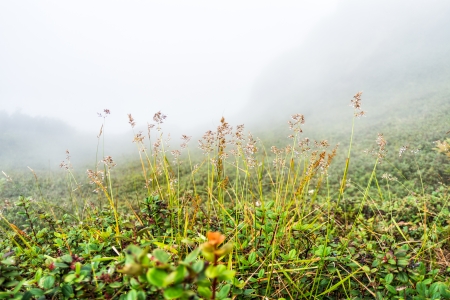Discovering Britains Natural Heritage
Beneath the rolling mists and patchwork fields of the British countryside lies a living tapestry woven over centuries: wildflower meadows and ancient woodlands. These landscapes are not mere backdrops to history—they are the pulse and memory of Britain itself, teeming with stories, legends, and an ecological richness that is nothing short of breathtaking. Wildflower meadows, once abundant across the UK, supported a dazzling array of pollinators and birds, offering a vibrant spectacle each summer that shaped rural traditions and folklore. Ancient woodland, some dating back to the last Ice Age, stands as a living archive of Britain’s ecological past, sheltering rare species in a green cathedral of oaks, bluebells, and whispering leaves. Their historical importance cannot be overstated; they provided timber for Tudor ships, herbs for medieval apothecaries, and inspiration for poets from Wordsworth to Thomas Hardy. Today, however, both meadows and woods face unprecedented challenges from intensive farming, urban sprawl, and climate change. The urgency to restore these habitats is not just about conserving wildlife—it is about preserving a piece of our collective identity. Across the UK, communities are rising to this challenge through volunteering and grassroots projects that reconnect people with nature’s wild heart. This revival is more than environmental work; it is an adventure that calls on courage, ingenuity, and a deep-rooted sense of belonging to the land.
2. Current Challenges and the Urgency for Restoration
Across the rolling hills of Yorkshire to the ancient woodlands of Kent, Britain’s natural landscapes are under siege. Once-vibrant wildflower meadows and dense woodlands are now mere shadows of their former glory, with only a tiny fraction surviving compared to a century ago. The urgency for restoration is not simply nostalgic longing—it’s a race against time fuelled by hard-hitting environmental realities.
Habitat Loss: Where Have Our Meadows Gone?
Wildflower meadows that once carpeted the countryside have dwindled by an estimated 97% since the 1930s. Urban development, intensive agriculture, and infrastructure expansion have carved up these habitats, leaving isolated pockets struggling to support native flora and fauna. Woodland coverage has also suffered, both from historic land clearance and modern-day pressures.
The Major Causes of Habitat Loss
| Cause | Description | Impact |
|---|---|---|
| Urbanisation | Expansion of towns and cities into green spaces | Fragmentation & loss of continuous habitats |
| Agricultural Intensification | Use of pesticides, fertilisers & monoculture crops | Decline in plant diversity & insect populations |
| Infrastructure Projects | Roads, railways, housing developments | Physical barriers for wildlife movement |
Invasive Species: The Uninvited Guests
Buddleia sprouting along railway tracks, rhododendrons choking out bluebells—non-native plants and animals are reshaping Britain’s ecosystems at an alarming pace. These invaders often outcompete local species for light, space, and nutrients, tipping the delicate ecological balance and causing knock-on effects throughout the food chain.
Climate Change: Turning Up the Heat on Conservation
The UK’s weather is becoming more unpredictable—hotter summers, wetter winters, prolonged droughts—all consequences of climate change that place extra stress on fragile habitats. Some native species are unable to adapt quickly enough, leading to local extinctions and further reducing biodiversity. Climate change isn’t just a threat; it’s an accelerant making all other problems worse.
The Case for Immediate Action
This perfect storm of habitat loss, invasive species, and climate instability sets the scene for why restoration projects—powered by community grit and volunteer action—are not just desirable but absolutely essential across Britain today. Without bold intervention, we risk losing some of our most cherished wild spaces forever.

3. Joining the Cause: Volunteering in Meadow and Woodland Projects
There’s nothing quite like the exhilaration of stepping out onto a wildflower meadow just after dawn, boots squelching through dew-soaked grass, hands already itching to get stuck in. Volunteering for community-led restoration projects across Britain is no genteel stroll in the park—it’s a proper adventure, complete with mud up your sleeves and wind howling over your shoulder. My own initiation began on a blustery Saturday at the edge of Dartmoor, where a ragtag crew gathered under lowering skies, mugs of tea steaming as we sized up the overgrown plot before us. We weren’t professionals—just teachers, students, pensioners, and a couple of hardy teenagers armed with spades and boundless enthusiasm.
The camaraderie that springs up on these projects is something fierce. There’s laughter as someone inevitably loses a welly to a particularly treacherous patch of bog; there’s collective groaning when the heavens open and turn everything slicker than an eel. But it’s in these moments—digging trenches for hedgerows or scattering native wildflower seeds in the teeth of a gale—that you really feel part of something bigger. On one occasion near the Chilterns, I found myself side by side with a local farmer whose family had worked the land for generations. Between us, knees deep in brambles, he shared stories of lost meadows and the birds that once thrived there—stories I felt we were helping to revive with every stubborn root we unearthed.
It’s not all hard graft, mind. Breaks are spent huddled round battered flasks, swapping tales and biscuits while red kites wheel overhead. There’s a sense of pride too—walking back at dusk to see newly planted saplings staked against the wind or catching the first flush of cowslips blooming where there was once only scrub. Each day volunteering might leave you aching and caked in mud, but it also leaves you fiercely alive—and deeply connected to both land and community.
4. The Art and Graft of Restoration
There’s nothing quite like plunging your hands into British soil, knowing you’re part of a wild transformation. Restoring wildflower meadows and woodlands isn’t just about scattering seeds or swinging an axe—its a full-bodied, all-weather challenge that tests your mettle and rewards you with unexpected discoveries.
The Hands-on Reality: Wildflower Planting
It starts innocently enough—kneeling in dew-soaked grass, clutching trays of native seedlings. But the ground is rarely as welcoming as it looks. Clay-heavy soils from Yorkshire to Cornwall can suck at your boots, while stony patches in the Cotswolds force every dibber-wielding volunteer to improvise. And then there’s the British weather—a fickle companion. One moment you’re basking in gentle sunshine, the next you’re battling sideways rain that turns your planting plan into a mud wrestling match. Yet, there’s camaraderie in these moments; laughter rises above the drizzle as volunteers compare earth-caked hands and swap tales of last year’s drought or deluge.
Traditional Haymaking: Sweat and Strategy
Come summer, haymaking arrives with a sense of ritual. Scythes swing in rhythmic arcs, guided by seasoned hands and eager learners alike. The scent of fresh-cut grass mingles with wildflowers—oxeye daisy, knapweed, red clover—sheltering pollinators as the cuttings are gathered. Timing is everything: cut too early, and wildlife suffers; too late, and seeds are lost. Weather remains both adversary and ally—a sudden shower can turn fragrant hay into a sodden mess overnight.
| Challenge | Wildflower Meadows | Woodland Management |
|---|---|---|
| Weather Surprises | Unexpected frosts, torrential rain during seed sowing | Storm-damaged trees blocking paths |
| Physical Demands | Bending and kneeling for hours | Lifting logs, bramble clearing |
| Local Wildlife Encounters | Nesting birds disturbed by machinery | Mice, foxes emerging from brush piles |
| Community Coordination | Organising volunteer shifts around school holidays | Ensuring safety during tool use |
Woodland Management: Grit Meets Greenery
Tackling woodland brings its own set of trials. Coppicing hazel on a biting January morning leaves cheeks numb but spirits high. Volunteers swap stories over flasks of strong tea, hacking through brambles to let light reach the woodland floor. There’s always a surprise: ancient tree stumps sprouting fungi, or tawny owls peering down from their hollowed homes. Each day ends with sore muscles but a deep sense of accomplishment—the woods breathe easier thanks to collective graft.
The Unpredictable British Element: Weather!
If there’s one thing you can count on during restoration projects, it’s that you can’t count on the weather. Every seasoned volunteer carries waterproofs and sun cream alike—prepared for four seasons before lunch. But it’s these shared hardships that forge community bonds and keep everyone coming back for more.
5. Community Spirit: Bringing Locals Together
If you’ve ever trudged through the mud with a spade in hand, wind whipping at your jacket and drizzle clinging to your fringe, you’ll know there’s nothing quite like that sense of camaraderie forged during a community conservation project. Restoring wildflower meadows and ancient woodland isn’t just about the land—it’s about people coming together in true British fashion, rain or shine, united by purpose and a stubborn refusal to let grey skies dampen their spirits.
Forging Connections on the Front Line
These projects aren’t for the faint-hearted. Early Saturday mornings see locals pulling on wellies, trading weekend lie-ins for graft among brambles and nettles. But as hands get dirty and backs ache, bonds are built that no amount of small talk at the pub can match. It’s shoulder-to-shoulder work, where laughter cuts through exhaustion and everyone, from teenagers to pensioners, has a role to play. The shared goal—breathing life back into forgotten meadows or replanting native trees—transforms strangers into teammates, fostering connections that last long after the tools are packed away.
Resilience Born in Adversity
Let’s be honest: British weather is rarely on our side. But it’s precisely those soggy weekends and stubborn patches of stubborn clay that build resilience—not just in the landscape but in the volunteers themselves. Every time a hedge is laid or wildflowers seeded despite biting winds, confidence grows. People realise they’re capable of more than they imagined, and that collective effort can move mountains—or at least clear invasive brambles.
Pride Shared Over Tea and Biscuits
No British adventure is complete without a proper brew at the end of the day. As tools are stowed and muddy boots kicked off, mugs of tea and plates of biscuits appear like magic. Here, stories are swapped—about rogue badgers unearthed during digging or rare butterflies spotted flitting between blooms. Pride bubbles up in every smile; this patch of restored meadow or woodland belongs to everyone who put their heart (and elbow grease) into it. It’s grassroots pride, stitched together with laughter, hard work, and countless cuppas—a testament to what can happen when a community rolls up its sleeves for nature.
6. Reaping the Rewards: Wildlife Returns and Lasting Change
The wild winds of change have swept across our once-quiet meadows and woodlands, and now it’s time to celebrate the epic comeback. There’s a raw exhilaration in spotting skylarks spiralling skywards or seeing hedgehogs snuffling through dew-soaked grass at dawn—proof positive that our graft has kickstarted nature’s own adventure story right here on British soil. From the first scatter of native wildflower seed to the careful planting of oak saplings, every act of volunteering has paid off tenfold. Wildflowers burst into riotous colour come spring, while bees and butterflies dive-bomb from bloom to bloom, weaving a living tapestry that’s as vibrant as any city mural.
Flourishing Flora and Fauna
As meadows recover and woodlands thicken, local wildlife is staging an all-out return. Barn owls glide low over fields at twilight, badgers trundle along ancient tracks, and frogs chorus in rewilded ponds. These scenes aren’t just the stuff of rural legend—they’re unfolding thanks to relentless community action and collective vision. The thrill of discovery never fades; every rare orchid or scuttling beetle is a badge of honour for those who’ve braved rain, mud, and midges to make this happen.
Boosting Biodiversity for All
The benefits ripple far beyond what’s visible to the naked eye. Restored habitats mean healthier soils, cleaner air, and natural flood defences that keep villages safe when storms roll in off the Atlantic. Each hedge planted connects corridors for wildlife, letting species migrate and thrive as they once did. For volunteers, there’s a fierce sense of pride in knowing their sweat and perseverance are shaping a landscape where biodiversity can truly flourish—now and for generations yet unborn.
A Legacy for the Future
This isn’t just about today’s wins; it’s about sowing seeds for tomorrow’s adventurers. Children clambering over logs in rewilded woodlands are forging lifelong bonds with nature, learning resilience, curiosity, and respect. Communities once fragmented by modern life now unite around shared purpose—proof that restoring wild spaces restores something deep within ourselves. As we gather each year to mark new blooms or the return of elusive birds, we’re not just celebrating nature—we’re ensuring its survival, one wild meadow at a time.


